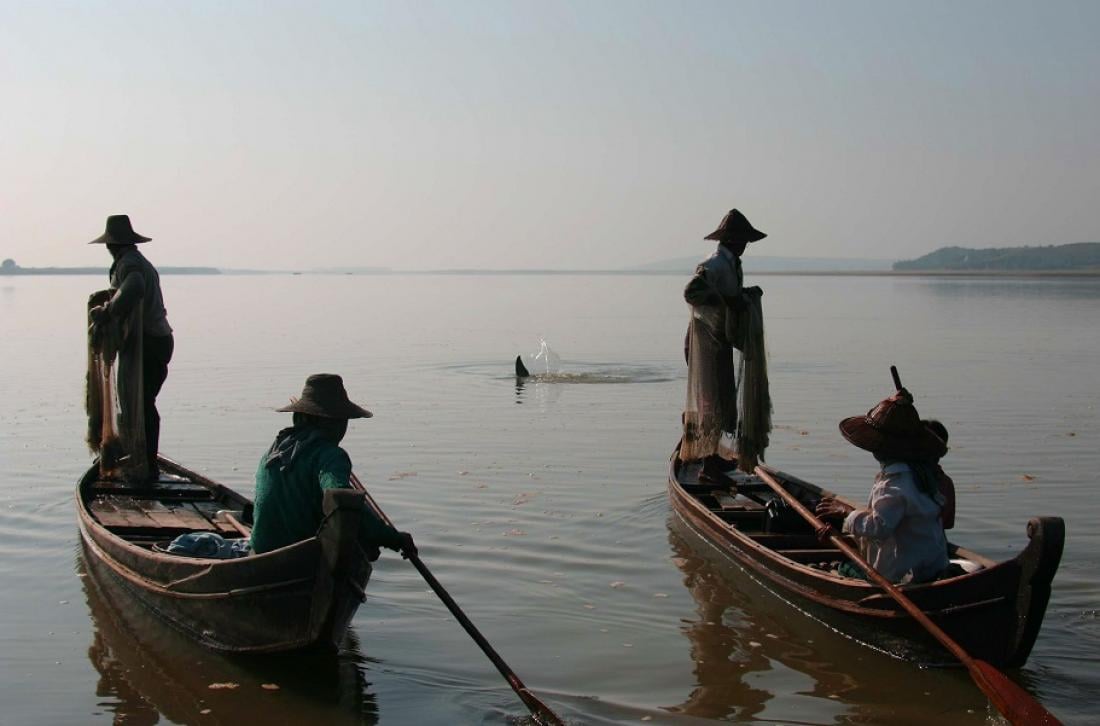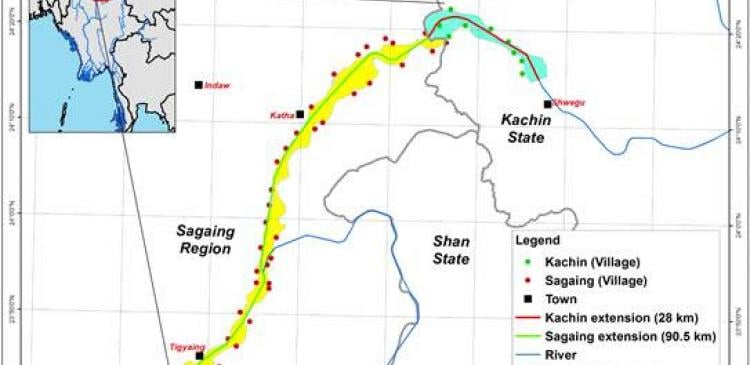Irrawaddy dolphins in Myanmar’s Ayeyawady River are known to cooperate with fishermen by driving fish into their nets.
- Gillnet limits and other harmful fishing practices banned in new 100-kilometer area - A 2018 census tallied 76 dolphins in the Ayeyawady River The new 100-kilometer (62 mile) zone will serve as an extension to an existing protected area established in 2005 between the towns of Mingun and Kyauk Myaung which established in collaboration between DoF and WCS. Said Saw Htun, Deputy Country Program Director, WCS Myanmar Program: “Establishment of the new Ayeyawady Dolphin Protected Area demonstrates the significant commitment of the Myanmar Government to conserve this charismatic species of the Ayeyawady River. WCS will collaborate with all stakeholders on coordinated efforts to save the threatened Irrawaddy dolphins in existing and new protected areas.” Conservationists counted a total of 76 Irrawaddy dolphins living in the Ayeyawady River during a population survey earlier this year between the river towns of Mandalay and Bhamo. To establish the new protected area, DoF and WCS consulted with over 50 villages along the river. Based on those meetings the protected area status was agreed for a 100 kilometer stretch of the river from Male to Shwegu, with a further 100 kilometers designated as a less restrictive buffer area. Within the new protected area, use and size of gillnets is restricted to prevent dolphins from getting entangled where they sometimes drown. In addition, other methods like electric fishing and the use of dynamite and gold mining are strictly prohibited along with damage of habitat such as sandbars, grasslands, and vegetation. The Irrawaddy dolphin grows to some 2 to 2.5 meters in length (6.5 to 8 feet) and frequents large rivers, estuaries, and freshwater lagoons in South and Southeast Asia. In Myanmar’s Ayeyarwaddy River, these dolphins are known for “cooperative fishing” with humans, where the animals voluntarily herd schools of fish toward fishing boats and awaiting nets. With the aid of dolphins, fishermen can increase the size of their catches up to threefold. The dolphins appear to benefit from this relationship by easily preying on the cornered fish and those that fall out of the net as the fishermen pull it from the water. This work was supported by Margaret A. Cargill Philanthropies. ### Wildlife Conservation Society (WCS) MISSION: WCS saves wildlife and wild places worldwide through science, conservation action, education, and inspiring people to value nature. To achieve our mission, WCS, based at the Bronx Zoo, harnesses the power of its Global Conservation Program in nearly 60 nations and in all the world’s oceans and its five wildlife parks in New York City, visited by 4 million people annually. WCS combines its expertise in the field, zoos, and aquarium to achieve its conservation mission. Visit the website (below). Follow WCS on Twitter (below). For more information: +1 (347) 840-1242.




